2019 Environmental Merit Award Recipients
- Welcome
- Ira Leighton "In Service to States"
- Lifetime Achievement
- Individual
- Government
- Environmental, Community, Academia & Nonprofit
- Business
- Children's Environmental Health
- 2019 Special Thanks
Welcome to the 2019 Environmental Merit Awards Ceremony
Dedication
Posthumous
Douglas M. Costle
McLean, Virginia
Douglas M. Costle was among the driving forces in the creation of the Environmental Protection Agency in 1970. After Richard M. Nixon was inaugurated in 1969, Doug was recruited to the White House Advisory Council on Executive Organization where he played a major role in conceptualizing the agency. He was appointed by President Jimmy Carter to serve as EPA's administrator from 1977 to 1981. At his first news conference, Doug noted that "Clean air is not an aesthetic luxury. It is a public health necessity." Doug advanced the argument, new at the time, that environmental regulation supported economic development because it preserved resources. Doug served as dean of Vermont Law School from 1987 to 1991. He died this year at his home in McLean, Virginia.
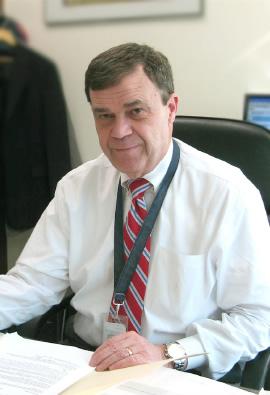
Ira W. Leighton, Jr.
1945-2013
Dedicated EPA public servant since 1972
A true friend, a mentor and a lover of New England. He will be missed.
Ira Leighton "In Service to States" Annual Award
The New England Interstate Water Pollution Control Commission (NEIWPCC), the Northeast States for Coordinated Air Use Management (NESCAUM), the Northeast Waste Management Officials' Association (NEWMOA), in coordination with the New England state Environmental Commissioners and the United States Environmental Protection Agency, Region 1 (EPA) have initiated the Ira Leighton "In Service to States" Environmental Merit Award as a tribute to our long-time colleague and friend, Ira Leighton, who passed away in 2013, after serving forty-one years at the US EPA. Ira's dedication and passion for protecting the environment was evident to all who knew him. He was a constant presence in New England; a force who took ideas and made them actionable tasks that resulted in measurable improvements.
Saluting the Ira Leighton "In Service to States" Annual Award Recipient
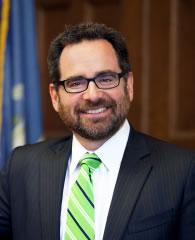
Robert Klee
Hartford, Connecticut
Robert Klee, commissioner of Connecticut's Department of Energy and Environmental Protection from January 2014 to December 2018, has a long history of working for the environment in Connecticut. Before becoming commission, Rob was the department's chief of staff, working on energy policy and environmental regulations.
Before joining the state, Rob was an attorney with Wiggin and Dana in New Haven, where he specialized in appellate work as well as energy and environmental law. He has a doctorate in industrial ecology from Yale's School of Forestry & Environmental Studies, a law degree from Yale, and an undergraduate degree from Princeton in geology and environmental science.
Rob's efforts represent a considerable body of work across all environmental and energy programs, from air, land, and water quality. He has worked for wildlife conservation, open space, energy efficiency, and renewable energy and has focused on issues of climate change.
Some of Rob's most-noteworthy accomplishments include: leading the way in forging bipartisan common ground among the states on environmental policy; championing climate change legislation; putting 3,624 acres back to productive use, adding 5,059 acres of land to state parks, and adding a program that provided free access to state parks. He also guided Connecticut in joining California to support the need for stringent vehicle emission standards, reducing air pollution from major facilities by 23 percent from 2011 to 2017. This effort also supported 38,000 state jobs through investments in renewable energy and energy efficiency.
Perhaps Rob's most important accomplishment was earning the nickname "Dr. Trash" through his work in residential recycling and with producers of paint, mattresses and packaging, among other things. Rob's numerous accomplishments reflect the breadth and diversity of the roughly 860-person agency he led for four years.
Lifetime Achievement
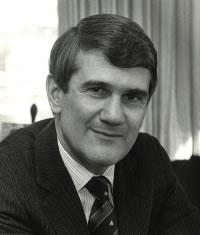
Michael R. Deland - posthumous
Marion, Massachusetts
Michael R. Deland was regional administrator of EPA's New England office from 1983 to 1989. Michael was appointed regional administrator by EPA Administrator William Ruckelshaus. In this role, the Massachusetts native was central to the cleanup of Boston Harbor, having filed the lawsuit in 1985 on behalf of the EPA that led to the cleanup of one of the nation's dirtiest bodies of water. He once was called "the most aggressive environmental law enforcement official in the nation" by an attorney at the Conservation Law Foundation.
Michael first came to EPA in the early 1970s as a lawyer, went on to join a consulting firm before returning to New England EPA as administrator. President George H.W. Bush in 1989 named Michael chairman of the White House Council on Environmental Quality, which coordinates environmental policy for the White House.
When EPA scaled back staff in the 1980s, Michael wrote a column for the American Chemical Society journal noting the drop-off in enforcement cases was prompting "the question whether the agency can continue to be a viable factor in environmental protection." Michael was known to consistently seek out expert opinions before making decisions, aware he had to take into account the interests of environmentalists, developers, and economic advisers.
Although Michael always will be remembered for the Boston Harbor cleanup, another of his notable accomplishments had national implications. After Michael overruled an Army Corps of Engineers permit for mall developers to fill in 32 acres of wetlands in Attleboro, the case went to the US Supreme Court. This led to a 1989 ruling that forced developers look for alternative sites rather than filling in wetlands.
Not to be deterred by his physical challenges, Michael used a cane, then crutches, and finally a wheelchair to get to where he had to be amid debilitating and worsening back problems. He was proud to have led a successful campaign to get a statue of President Franklin D. Roosevelt, seated in his wheelchair, at his memorial in Washington. In 1992, Michael accompanied Bush to Rio de Janeiro, where Bush signed the UN Framework Convention on Climate Change.
Michael Reeves Deland was born in Boston in 1941 and grew up in Brookline. He learned to sail during summers in Marion and continued to race even after his walking was limited. He received a bachelor's degree from Harvard in 1963 before he joined the Navy, where he was stationed in Japan. He graduated in 1969 from Boston College Law School and in 1973 married Jane Slocum.
After Michael's death in January of this year, his family said in a statement, "We had the great privilege of witnessing our Dad's perseverance, humor, and steadfast loyalty and determination on a daily basis." Those who remember Michael Deland at EPA New England will also remember these qualities, as well as his profound commitment to protecting New England's environment.
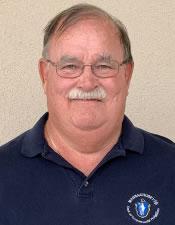
Edward P. Kunce
Brockton, Massachusetts
From 1986 until 2012, Edward Kunce served as regional director, deputy commissioner and acting commissioner of the Massachusetts Department of Environmental Protection. For over two decades, Ed oversaw DEP's permitting, compliance and enforcement, technical assistance, and emergency response functions. In all these efforts, he showed a commitment to environmental results, a desire to advance innovative approaches, and an ability to collaborate.
His leadership on major, highly complex projects illustrates Ed's success. The Central Artery/Tunnel Project created tremendous environmental challenges, including how to handle 30 million tons of excavated, contaminated material. Ed led DEP's efforts, working with local, state, and federal partners to develop approaches that resulted in the reuse of excavated material; returning 1,600 acres of land to beneficial uses, the majority for parks and athletic fields; remediation of 27 acres, allowing for development of Rose Fitzgerald Kennedy Greenway; and adding 6,900 feet of Boston Harborwalk. Ed provided similar leadership at the Massachusetts Military Reservation Superfund Site. At a time when the cleanup was floundering, Ed was instrumental in establishing a strategic plan, with scheduled and enforceable milestones, as well as in creating a new management structure that eased the way for more public participation. These efforts moved the reservation's cleanup program from failure to success.
Ed's innovative methods include the Environmental Results Program, Third-Party Inspectors, multi-media inspections, and a semi-privatized waste site cleanup program. He successfully promoted new permitting and regulatory requirements that yielded environmental improvements, such as mercury controls on waste combustors that dramatically reduced mercury emissions; diesel retrofit requirements for construction equipment; and permits for natural gas plants resulting in the cleanest plants in the country. He led development of the department's mobile lab, improving its ability to respond to emergencies and provide real-time data used to assess and prevent, public health threats.
While these achievements are examples of Ed's successful approach, they provide just a glimpse into his impact on DEP. He fostered an atmosphere where innovation and common sense were part of the discussion of complex problems. He understood that all of the tools in the regulatory tool box - compliance and enforcement, as well as technical assistance and effective communication – are important. Through his efforts and leadership, Ed played a huge role in shaping DEP into the results-driven, innovative and collaborative agency it is today.
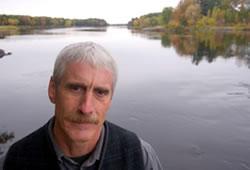
John Banks
Indian Island, Maine
John Banks was named director of the Penobscot Indian Nation's Department of Natural Resources when the Nation was first recognized in 1980. A graduate of University of Maine with a degree in forestry, John became the department's first employee and continues today as the only director it has had. He now runs a department of eight programs.
The Penobscot Nation, under John's leadership, has protected human health and the environment through comprehensive water quality monitoring and many projects reducing runoff along the Penobscot River and other waterbodies. John also has overseen cleanup of 440 contaminated acres on Nation lands.
John has been a steadfast advocate for protective water quality standards in the Penobscot and other waters where Penobscot Nation members fish for sustenance. He was lead negotiator of the Penobscot River Restoration Trust, which began in 1999 with a goal to re-balance hydro-power and restore sea-run fisheries on the river. Through this monumental effort involving the Nation, federal, state and NGO partners, two obstructing dams were removed and a fish byway was constructed allowing 11 fish species, including the Atlantic salmon, to return. Since then, thousands of diadromous fish species have returned to the river and tributaries, providing lasting sustenance for tribal members and the general populace.
As commissioner of the Maine Indian Tribal State Commission for 31 years, John is the longest serving commissioner in commission history. He also served on the National Tribal Environmental Council, EPA New England's Tribal Operations Committee, the East Regional Tribal Conservation Advisory Council, the Native American Fish and Wildlife Society, the National Indian Policy Center, and Maine Rivers. In 2015, John became the first indigenous member of the US delegation to the North Atlantic Salmon Conservation Organization annual international meeting.
Due to John Banks' 39 years of leadership, the Nation's environmental program is widely recognized as a model for tribes across the nation.
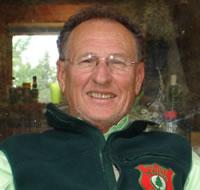
Matthew Scott
Belgrade, Maine
Since childhood, Matthew Scott has been an avid outdoorsman. In 1962, Matt became assistant regional fisheries biologist for the state Department of Fish and Game, then regional biologist in 1967.
In 1970, he was recruited by the Environmental Improvement Commission, later renamed Department of Environmental Protection, as the first biologist in an agency of primarily engineers. He developed strong scientific programs to protect water quality, which led to a Maine Lakes Working Group, made up of state agencies promoting management of Maine's lakes and ponds.
In 1974, Matt formed the Maine Volunteer Lakes Monitoring Program, leading to four decades of data from hundreds of lakes. Under Matt's leadership, staff at DEP developed a biological monitoring program assessing water quality and a nutrient management model regulating development, both among the best in the country. When Matt retired from DEP in 1988, he became executive director of the Maine Low Level Radioactive Waste Commission, working to find a long-term storage site for low-level radioactive waste from Maine Yankee. His 1995 retirement brought him to Colby College, where he taught environmental science for two years before becoming deputy commissioner of the Maine Department of Inland Fisheries and Wildlife.
In 2000, as executive director of Project SHARE, Matt helped create river watershed councils for five major rivers. In 2003, he was appointed to the Board of Environmental Protection, a citizen board providing oversight to the DEP, where he served eight years, eventually as chairman.
The list goes on. Matt even found time to be a planning board member and Boy Scouts Scoutmaster in his hometown of Belgrade. A board member of the Seven Lakes Alliance of the Belgrade Lakes region, Matt has donated most of his 100-plus-acre farm as a conservation trust.
Matt Scott is a perpetual guardian of environmental quality.
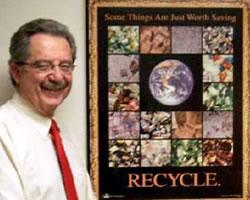
Michael W. Durfor
Epsom, New Hampshire
Michael Durfor began at the Northeast Resource Recovery Association in December of 2008. During his decade-long leadership, the nation's oldest member-driven recycling and cooperative marketing association increased support for member services, technical support programs, and education for citizens and professionals. Mike directed the start of the newsletter, updated market pricing, renegotiated marketing contracts, and added single-stream recycling and municipal solid waste at the association.
In 2008, recycling markets were at an all-time low. Realizing that in crisis lies opportunity, Mike and his staff charted a new course, focusing on market development, expanding materials and education. That strategy was so successful the association expanded to every New England state.
Just as the market recovery was beginning, Mike and his team faced their next great challenge: consolidation of the industry and the emergence of single stream recycling. Association members needed data to decide whether or not to move to single stream. With support from the association, many members invested in infrastructure so they could market their materials directly. Now, years later, they are benefitting from the work of Mike and his team.
While at the association, he faced a barrage of difficult issues. Tipping fees; recycling rates; diversion rates; reuse of mixed paper; processed glass aggregate reuse; waste characterization studies; contract negotiations; rural logistics, new technologies; and the Green Fence were among challenges for which Mike became a regional leader. Along the way, partnerships expanded the scope and reach of the organization's mission, including the acquisition of the Association of Vermont Recyclers in 2009 and oversight of the best-in-nation electronics recycling program.
Over the last decade, Mike Durfor's organization has recycled 1.3 million pounds of material, just one figure to represent his accomplishments. In May, Mike Durfor retired from the National Resource Recovery Association and turned it over to the next generation of recyclers.
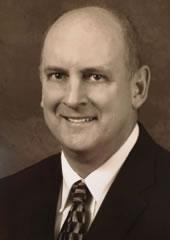
Collis G. Adams
Concord, New Hampshire
Collis Adams retired in August from his job as wetlands bureau administrator for the NH Department of Environmental Services, a job he held for 19 years. In this position, Collis oversaw dredge, fill and construction in wetlands, surface waters, coastal areas, and protected shorelands. During this time, he also served on the Wetlands Board, the In Lieu Fee Mitigation Site Selection Committee, and the NH Stream Crossing Initiative. Collis was an active member of the DES "Silver Jackets," an incident and recovery response team that works to increase awareness, reduce flood risk, and facilitate partnerships aimed at mitigating and recovering from flooding events.
In 2017, Collis was given the State, Tribal, and Local Program Development award by the Environmental Law Institute. He served as chair of the Association of State Wetland Managers, helping create several capacity-building projects serving states and tribes in wetland regulation, restoration, monitoring and assessment, and development of wetland water quality standards. At the national level he has served on the Association of Wetland Managers for six years, most recently as chair. He recently served on the Assumable Waters Subcommittee under the auspices of the National Advisory Council for Environmental Policy and Technology to make recommendations for state assumption of the Clean Water Act 404 program.
In December 2017, Collis was given the DES Continuous Process Improvement Award for working with a DES Lean team to create a triage technical review process for the state Department of Transportation. This past year, under his leadership, the wetlands bureau completed a multi-year initiative to adopt new wetland rules that capture changes in state law, consistency with the federal Corps General permit, best available science, and increased streamlining. His staff have presented regionally on mitigation initiatives, wetland buffers, climate change, best management practices, conservation, stream crossings, and aquatic restoration mapping tools.
Collis Adams' leadership will carry on with a passionate staff dedicated to the mission of protecting and preserving valuable wetlands while allowing reasonable development.
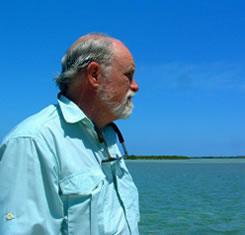
David Deen
Putney, Vermont
David Deen, a Vermont representative for 30 years, spent much of that time also working as the Connecticut River Conservancy River Steward before he retired from both in 2018. Throughout his career, in both his personal and professional life, David worked for clean water protections. His deep knowledge of and clear passion for Vermont's rivers, lakes, streams, ponds and wetlands are an incredible gift to anyone who lives, works or plays in Vermont.
For most of his legislative career David was on the House Committee on Natural Resources, Fish and Wildlife, serving as chair for the nearly 15 years. He consistently created space for all voices to be heard and sponsored many pieces of important environmental legislation. Some of the most notable pieces of legislation were the designation of groundwater as a legally protected public trust resource in Vermont; four separate acts between 2010 and 2014 that promoted the identification and protection of flood hazard areas and river corridors to reduce flood and fluvial erosion hazards; and the Vermont Clean Water Act of 2015, which includes far-reaching requirements to improve stormwater management and expand agricultural stewardship activities statewide.
David has been a New Hampshire licensed fly-fishing guide for more than 20 years, teaching people to fish while also teaching them the basics of healthy rivers, and helping connect them directly to a resource he so clearly cherishes. This lifetime achievement award recognizes David's service to Vermont, Vermonters, and the state's incredible natural resources.
Individual
Peter August
Richmond, Rhode Island
As a University of Rhode Island professor since 1981, Peter August has inspired hundreds of individuals to get involved in science and conservation. As a volunteer, he has developed trails and protected land. As a visionary, he has developed programs to support habitat and promote scientific decision tools. Pete's engagement in environmental issues made him the obvious choice by the governor to chair the Science and Technical Advisory Board. In this position, Pete developed climate change information and played an important role in developing Resilient Rhody, the state's resiliency plan. Founding director of URI's Coastal Institute, Pete brought together scientists and stakeholders to improve public policies. He was a founder of URI's Environmental Data Center, which uses GIS mapping to address land conservation and natural resource management. Pete uses geographic mapping to help the state conserve properties and he has made GIS technology accessible to environmental decision-makers, improving the quality of decisions and helping ensure a more resilient Rhode Island. As chair of the Science Advisory Committee for Napatree Point Conservation Area, a pristine barrier island ecosystem in Westerly, Pete has coordinated vegetation surveys, aerial photo acquisition, depth and eelgrass monitoring, shoreline mapping, and mammal, bat and bird surveys since 2012. This work has demonstrated how fragile coastal areas can be protected from degradation and can rebound from storms. Pete's ability to drive lasting change makes him a conservation leader and hero in Rhode Island.
Mary Ann Tilton
Concord, New Hampshire
Mary Ann Tilton, Assistant Bureau Administrator for the Wetlands Bureau of the NH Department of Environmental Services, has worked with EPA's wetlands program for more than 25 years. Mary Ann led an effort to rewrite coastal and inland state rules, the first rewrite since 1991. This required an extraordinary amount of time, including weekends and evenings. She also has organized and led multiple internal work groups, 40 public meetings, many drafts, and thousands of responses to comments, in addition to her "regular" work supervising staff, putting in place wetland program plans and grant proposals, and overseeing enforcement and compliance activities. Mary Ann also has streamlined permitting, saving money and providing one-stop shopping for applicants needing multiple state permits for development. She has been a leader in regional wetland issues, including meeting with EPA and other New England states to share ideas and experience. She has given talks on issues, including wetland buffers, assessment, and finding innovative approaches to make government wetland reviews more efficient. Among her accomplishments in balancing resource protection with landowners' rights was the recent "Wetlands Best Management Practice Techniques" manual, focused on minimizing impacts from development and written to help permit applicants understand state expectations when planning projects. MaryAnn also has led a working group to draft NH's first stream crossing rules, and then worked with groups to produce the first state regulations. The new rules place greater emphasis on stream resources and aquatic organism passage. MaryAnn's career exemplifies inspirational leadership focused on protecting resources while upholding the public trust.
Boyd Smith
Newfound, New Hampshire
The executive director of the Newfound Lake Region Association had a vision for development of a watershed-based plan for the fifth largest lake in New Hampshire that might have sounded far-fetched. When Boyd Smith is that director, chances of success are good. Boyd spearheaded development of a watershed-based plan for Newfound Lake and has secured several rounds of funding since 2009. He continues to be the champion of protection efforts for the 96-square-mile watershed. Boyd realized focusing too much on local planning boards might not be the best way to get progressive land-use regulations and policy for the watershed. Rather, he looked to informed voters and taxpayers to advocate for sustainable watershed policy. He collaborated with state and regional agencies to increase land conservation and secured $750,000, completed 11 land conservation projects in nine years, and facilitated $3.9 million in donations for conservation easements. Boyd is the hub of efforts that have increased conserved watershed acres from 12 percent to 30 percent in a decade. Boyd's work with the lake association led to a paradigm shift among residents in the nine watershed communities by consistently communicating why stormwater is a problem and what can be done about it. Boyd spent countless hours "in the trenches" to inspire neighbors to take action to protect the lake they love. This permanent lake protection is a victory for a vital ecosystem and economic driver in the region. Newfound Lake will reap the benefits of Boyd's hard work for generations to come.
Isabel Tourkantonis
Billerica, Massachusetts
Scientists in municipal government often don't get the accolades they deserve. Isabel Tourkantonis, Billerica's director of environmental affairs, deserves recognition for finding workable solutions to complex wetland environmental issues. With two tributary rivers - the Concord and Shawsheen - and many perennial streams, marshes, swamps, ponds, and isolated wetland pockets, the community depends on coordination between departments and applicants, an area where Isabel shines. In addition, Isabel is recognized for daily work doing technical reviews, delineations, restoration plans, vernal pool identification, and permitting. Finally, her efforts to prevent and reduce contamination deserve recognition. Through due diligence and outreach to property owners, she has added critical, biodiverse parcels to the inventory of land set aside for conservation. Within two years, Isabel has helped the town receive: five acres of marsh and floodplains in the Robbins Conservation Area, a wildlife corridor associated with a perennial tributary of the Shawsheen River; a 24-acre land area associated with the Village Crossing Project housing development, largely comprised of bordering vegetated wetlands; and a 1.45-acre Carter Avenue parcel in a scenic segment of the Concord River and an abutting riverfront parcel for the purposes of preserving and restoring a floodplain, riverfront and a buffer zone. Billerica residents do not always recognize efforts to enforce wetland protection rules, nor the struggle to convince individuals to donate land. Isabel takes that burden for the benefit of the community and planet.
Ivey St. John
Charlestown, Massachusetts
Ivey St. John, retiree and advocate from Charlestown, was a founding member of the Mystic River Watershed Steering Committee. She represents the Charlestown Waterfront Coalition on the steering committee. The Mystic River Watershed Initiative kicked off with a summit in 2008 that focused on water quality, open space, flooding, and industrial contamination in the 76-square-mile watershed. The steering committee was formed in 2009, co-chaired by EPA and the Mystic River Watershed Association. It helps establish priorities for the river and watershed, and recommends projects, specifically related to water quality and public access in the watershed. From the start, Ivey pushed to get non-profit groups an equal voice on the committee. The organization has taken on issues like eutrophication, sanitary sewer overflows, stormwater, and contamination related to heavy metals in fish tissue. Ivey worked with EPA and the Mystic River Watershed Association, pushing for improved water quality, open space, and public access to the river and its tributaries. Ivey has been a voice in every discussion at nearly every event and meeting since the initiative began. After a 2006 oil spill in Chelsea Creek, she helped lead a coalition to petition to have a portion of the penalty used for projects in the Mystic River watershed. Ultimately, $1 million was awarded for projects that reduced stormwater runoff, removed invasive species, supported monitoring, and improved habitat in the Malden River. Ivey has made exemplary efforts on behalf of the Mystic River Watershed.
Andrew Davison
Sandwich, Massachusetts
Over the past two decades, Andrew Davison, founder of Cape Cod Biofuels, has run a company with a clean fuel business model that extracts byproducts from farmlands, feeds citizens and recycles byproducts into clean fuels. His products improve air and water quality and increase energy and community resilience. The unique closed-loop recycling program developed by Cape Cod Biofuels reduced emissions. In 2018, more than 100 companies produced nearly 2 billion gallons of biodiesel nationwide. Most producers purchase oils and fats that remain in our economy in excess and recycle them into biofuel. Over a dozen of these companies operate secondary businesses: waste oil collection services from restaurants. Cape Cod Biofuels closes the loop from farms to fuel tanks. It works with farmers to supply oil to more than 400 restaurants, then collects used oil from these and 500 additional restaurants. It keeps the oil out of landfills by using it to make biodiesel that powers four of its trucks. It is also sold to construction companies, landscapers, commercial fisherman and municipalities. While clean-fueled trucks deliver vegetable oils, others recycle these same oils before recycling them into biofuels, leaving no used oil wasted. They then supply regional fleets with their final product. Davison, a US Coast Guard veteran, saw the impacts of the degradation of New England waters. The 700,000 gallons of biodiesel produced by Cape Cod Biofuels has resulted in an annual reduction of 50,000 pounds of carbon monoxide; 6,000 pounds of hydrocarbon and 5,000 pounds of particulate matter.
Robin Chapell
Walpole, Massachusetts
Robin Chapell, health director for the Town of Walpole, for decades has been an integral part of the successful redevelopment of the Blackburn & Union Privileges Superfund Site. As a member of the site's technical team, Robin was critical to the success of the cleanup and redevelopment. Her perseverance in representing community interests helped turn the formerly unusable properties into a police station, senior center and parking lot, all heavily used by the community. After the initial cleanup at the site, which has been listed as a Superfund site since 1994, the town was left with mostly abandoned mill buildings, an eyesore in a residential neighborhood. One was in such poor condition the local fire chief wouldn't allow crews inside if the building caught fire. After decades of negotiating, responsible parties agreed to take the buildings down, and redevelopment became possible. Without Robin's participation, negotiations might not have succeeded. An excellent mediator, Robin helped the site team navigate community needs, while reiterating that the cleanup had to be done to enhance the community. She worked for creative solutions that address both community concerns and environmental health. The result was the mill buildings coming down, contamination being more effectively contained, and the siting and aesthetic of the water treatment plant being changed to assuage neighborhood concerns. In addition, the town agreed to take the property by tax title, and the responsible parties took down the buildings. Redevelopment on the entire property was then possible.
Robert Isner
Hartford, Connecticut
Robert Isner has worked for more than 25 years at the Connecticut Department of Energy and Environmental Protection, where he is now director of the Waste Engineering and Enforcement Division. Robert's innovative solutions have made the state's waste program a leader nationally. About five years ago, EPA approached the department regarding hazardous waste facilities that needed an initial control to address immediate health risks. Seeing an opportunity, Robert pulled together a team from both his own division and the remediation division to partner with EPA to address these sites. Robert's division volunteered to spearhead this challenge and develop a strategic plan. Over the next five years, the majority of sites on the list have been resolved. Robert's quiet, but effective leadership style provided his staff the flexibility to be creative. Under Robert's direction, the department's waste program has shown innovation in settlements and policies to improve compliance. It has incorporated high-quality on-line training for the regulated community. DEEP has been innovative in writing settlements that include future compliance plans and third-party audits. One notable case, involving a national retail pharmacy chain, had a national impact on compliance in the regulated community. Robert's work with the Connecticut Hazardous Waste Advisory is a forum for information sharing between the department and regulated community. Robert is tenacious in his pursuit of transparent, effective and efficient government. He has dedicated his career to fair and reasonable environmental compliance.
James Surwilo
Montpelier, Vermont
James "Buzz" Surwilo, who works in the Vermont Department of Environmental Conservation, has been effective in reducing the waste stream, specifically through salvaging and recycling of construction, demolition and disaster debris materials. Buzz reviews Vermont's Act 250 plans, which require construction projects to have a waste management plan and offer suggestions for improving them. As a result, these plans are taken seriously and efforts to divert construction materials are becoming the norm. In the Robertson Paper brownfields cleanup in Bellows Falls, Buzz reviewed the draft plan, met with contractors, and refined the plan, increasing the amounts of brick, timbers, and other materials to be reclaimed. After Tropical Storm Irene, a cooperative effort between DEC and the state Department of Transportation to rebuild a more sustainable infrastructure resulted in recycled asphalt shingles being used in a gravel mix for shoulder and dirt road maintenance projects. Buzz's work increased the safe reuse, recycling and disposal of industrial byproducts, building materials and debris. Vermont produces about 25,000 tons of waste shingles per year and the sole recycler processes about 2,500 tons annually. Through Buzz's efforts, the use of recycled asphalt shingles was successfully piloted in unbound aggregate mixtures. The use of these shingles in road construction materials is now in high demand statewide. In the recent construction season, demand for the shingles had increased by 50 percent. Buzz's results have been replicated regionally and nationally. Buzz's work has been recognized as an example of market development strategies in Vermont and nationally.
Government
Electric Transit Bus Team
RI Department of Environmental Management
A team from four state agencies helped develop a plan using Rhode Island's $14.4 million share of a federal settlement with Volkswagen. As lead agency and administrator of the funds, the RI Department of Environmental Management developed the mitigation plan in conjunction with the Office of Energy Resources, the RI Public Transit Authority and the Division of Public Utilities. The state's plan for using the settlement funds, called the Beneficiary Mitigation Plan, calls for a 10-year period for environmental mitigation projects to improve air quality in Rhode Island, reduce diesel and nitrogen oxide emissions, and install electric vehicle infrastructure. Under the proposed plan, $10 million will pay to replace about 20 aging diesel buses with all-electric zero-emission vehicles, with a focus on communities with poor air quality and high asthma rates. Rhode Island has 73 hybrid buses. With this investment, the state's bus fleet will be about 36 percent low and zero-emission vehicles. Another $1.5 million will be used to add 15 to 30 fast-charging stations in 2020 to the eight existing public stations. About $2.5 million would be divided among organizations for the administrative costs of the projects. This initiative to replace the oldest diesel buses with zero emission vehicles could not have come to fruition without the dedicated service of employees at each of the four agencies.
Central Massachusetts Regional Stormwater Coalition
Spencer, Massachusetts
In 2011, three town administrators in Central Massachusetts created a coalition to help communities better manage stormwater. The idea for the Central Massachusetts Regional Stormwater Coalition was developed out of frustration about municipal budgets that never seem large enough for multiple infrastructure challenges and a desire to protect the community's natural resources. The 13 neighboring communities involved recognized they share stormwater systems, surface water resources, and the need to protect these resources. They set out to address common stormwater management priorities and to share solutions. Together, the coalition, funded with a state grant, has been able to protect shared resources and meet the requirements of their permits through National Pollutant Discharge Elimination System. It has developed templates, materials, and training, available on its website, to help communities comply with stormwater permits and use best management practices. The coalition has grown to include 30 communities and in 2014, partnered with the state Department of Environmental Protection to invite other regional coalitions into a statewide coalition that became the Massachusetts Statewide Municipal Stormwater Coalition. The Central Massachusetts Regional Stormwater Coalition has earned a reputation for empowering communities to better manage stormwater. It has worked to engage the community, provide a forum for information and education, and advocate for stormwater management practices that protect New England's environment.
Provincetown Stormwater Program
Provincetown, Massachusetts
Dense development and large amounts of nonporous pavement in Provincetown Harbor have resulted in significant amounts of stormwater runoff reaching the harbor, hurting shell fishing and reducing water quality. The Massachusetts Department of Environmental Protection placed Provincetown Harbor on its 1992 Clean Water Act list of impaired waters for pathogens caused by polluted stormwater runoff. As a result, Provincetown, among other changes, installed more than two miles of porous pavement on Commercial Street. Provincetown Harbor has already found it has cleaner water, with a 90 percent reduction in beach closings. The improvements addressed bacterial and untreated stormwater runoff from the main street through town, Commercial Street, which provides primary access to the harbor and hosts hundreds of businesses. The challenge of treating stormwater from this narrow, highly traveled corridor was solved by reconstructing the road using porous pavement over a stone reservoir bed. Besides improving the harbor's water quality, the road reconstruction revitalizes the downtown. So far, 7,750 feet of Commercial Street were reconstructed with a new water main, granite curb, and pavement. Drainage at 17 outfalls was retrofitted with porous pavement. The project has been funded through a combination of town investments and grant funds. Business owners have been happy with the lack of standing water during rain. A progressive community and strong project team insured a successful application of the porous pavement.
City of Lawrence & Town of Andover
Massachusetts
The Lawrence Water & Sewer Department and the Andover Water Department made extraordinary efforts to help support the goal of developing a comprehensive water strategy for the Merrimack River. The Merrimack River is the most impaired water body in New England and serves as a drinking water source for five Massachusetts communities: Lawrence, Andover, Methuen, Tewksbury and Lowell. EPA's Office of Research and Development undertook a study to help assess and predict water quality in the Merrimack and, as part of its study, needed to install monitoring equipment at two drinking water intake locations. Andover and Lawrence generously provided access and assistance to EPA to install monitoring equipment necessary to support the study. Without Andover's and Lawrence's cooperation and assistance, EPA could not have undertaken this seminal water quality monitoring project – the only one of its kind in New England. Through this project, EPA collected water quality data during dry and wet weather to help predict bacterial conditions in the Merrimack River that could impact drinking water and recreational activities. The data collected was shared in "real-time" on EPA's website and continues to be evaluated by EPA's research scientists.
Town of Wolfeboro
Wolfeboro, New Hampshire
Wolfeboro, a picturesque community, maintains access to multiple waterbodies in the Lakes Region of New Hampshire. The town in recent years has prioritized projects to maintain and protect its water resources. In 2017, with David Ford as director of Public Works, the town set an example by putting in place one of the first asset management plans in New Hampshire. Asset management allows water managers to make well-informed decisions on how to best operate and maintain their systems, while maintaining infrastructure at the lowest cost possible. It allows municipal staff to work efficiently while maintaining high quality customer service. Water quality is severely diminished without an investment in infrastructure and the town of Wolfeboro is responsible for maintaining both town and state-owned stormwater facilities. There are 918 structures in the town with 20 to 100 added each year. An inventory of these assets is used to set priorities based on condition, analysis of life cycle and maintenance costs. Dave Ford embraced this project with vigor and passion. He communicated the importance of the program to town officials and the public. As a result, the Town of Wolfeboro now has an effective tool to help prioritize the town's infrastructure replacement, as well as the ability to better maintain high water quality and efficiently use staff time. This is an example of a town using resources wisely to secure its infrastructure and improve water quality.
NH Coastal Program
NH Department of Environmental Services
The NH Coastal Program provides funding and technical assistance to 17 communities on the coast to help them protect clean water, restore coastal habitats, and be resilient to flooding. The program's staff - Steve Couture, program administrator; Kirsten Howard, coastal resilience coordinator, and Nathalie Morison, coastal resilience specialist - have been key to New Hampshire being recognized as a national leader in climate adaptation planning. They secured and administrated hundreds of thousands of dollars in grants for coastal resilience efforts and participated in the recent update to the state's 2018 hazard mitigation plan, ensuring climate change and coastal flooding were included. The staff are members of the Coastal Adaptation Workgroup, which provides technical assistance and education to municipalities on climate adaptation activities. Two years ago, the Coastal Program took the lead on a "Climate Risk in the Seacoast" project, which assessed the impacts of climate change on 10 municipalities surrounding the Great Bay Estuary. Last year, the program led an effort to get the state and towns to put into place a report to the NH Coastal Risk and Hazardous Commission. This led Dover to adopt a Climate Adaptation Master Plan Chapter and Durham to amend its flood plain regulations. It also led to a climate change open house in Exeter and outreach to vulnerable businesses in Newington. Municipalities often get the credit for sustainability efforts, but without the New Hampshire Coastal Program staff, many coastal communities would not be where they are today.
Environmental, Community, Academia & Nonprofit
Baboosic Lake Association
Amherst and Merrimack, New Hampshire
Baboosic Lake Association's mission is to protect and restore Baboosic Lake in Amherst and Merrimack, NH. This small non-profit without paid staff has achieved huge improvements in the watershed. Baboosic Lake, located near heavy development, saw its water quality suffer due to poor land use decisions. To address water quality issues, the association developed a restoration plan, working with the state Department of Environmental Services. The association built a network of federal, state and local partners, as well as a group of skilled residents. As a result of the plan, the town of Amherst connected homes with 30 of the worst individual septic systems to a community septic system. The association also has stabilized slopes to reduce stormwater runoff and controlled and treated this runoff. Recently, the association used an EPA grant to control road erosion. Projects so far prevent about 58 pounds of phosphorus from entering the lake annually, close to the goal of 70 pounds. Water quality sampling showed decreasing trends in chlorophyll-a and total phosphorus. The 222-acre lake is no longer listed as impaired for recreation or aquatic life. Swimming advisories have decreased, with none in recent years. The Baboosic Lake Association not only motivates watershed protection, it also engages partners involved in restoration. It trains volunteer scuba divers for invasive aquatic plant control, supports a weed watcher program, performs water quality monitoring in coordination with the University of New Hampshire, and provides education.
Business
PerkinElmer Health Sciences Inc.
Shelton, Connecticut
PerkinElmer, which designs and manufactures lab equipment, makes its products in a way that minimizes adverse health and environmental impacts throughout a product's life-cycle. Its instruments have helped identify trace levels of lead and other materials in water, detect toxic air conditions, and screen soil to identify volatile organic compounds. The instruments are designed to consume fewer resources, and the company has removed hazardous substances, such as mercury, from all its products. For the past three years, employees have participated in an Earth Day household hazardous waste collection, bringing in more than 20,000 pounds of waste. In the last three years, employees also spread 181 wheelbarrows of mulch at the Beardsley Zoo, removed 2,000 pounds of trash and 25 contractor bags of plastic bottles from the Naugatuck River, replanted 2,000 strawberry plants at Massaro Community Farm, and dug 2,160 square feet of garden beds. Through recycling, PerkinElmer has diverted 4,957 pounds of nitrile gloves and disposable garments from landfills. The Shelton, Connecticut facility has limited it its carbon footprint through upgrades that include a new high efficiency cooling tower, lighting upgrades to LED, upgrading boilers to an efficient natural gas system and removing four 20,000-gallon oil tanks. The company also built a telepresence conference center to eliminate unnecessary travel. PerkinElmer works to improve human and environmental health around the world.
Garbage to Garden
Portland, Maine
Garbage to Garden is a regional food scrap recycler, providing curbside composting throughout Maine and the Boston area. Serving more than 8,000 households, businesses, schools and events, the nine-year-old Garbage to Garden collects an average of 21 tons of food scraps daily and is recognized as the most subscribed to composting company in the country. Households who subscribe get buckets to fill with compostables that Garbage to Garden takes away weekly. The organization also installs raised bed gardens to more than 100 urban and suburban gardeners yearly. For hundreds of businesses, schools, and universities, as well as local municipalities, Garbage to Garden provides commercial composting and recycling while educating students and employees on composting and recycling. The business started in founder Tyler Frank's apartment and expanded into 1,000 square feet, where Tyler lived for six months in a tent to save money for equipment. Four years ago, it moved to a 5,000-square-foot building and now needs a larger facility. A second location recently opened in Saugus. More event organizers each year look to Garbage to Garden to examine their waste and find alternatives that can be composted and recycled. It provides these services to some of New England's biggest festivals and hundreds of smaller events. Garbage to Garden's volunteer program allows lower income participants to earn free composting service. The business donates dozens of yards of compost a year to school and community gardens. Garbage to Garden's curbside composting has become much greater than the sum of its parts. Its work has been recognized locally and nationally.
Children's Environmental Health
Pioneer Valley Asthma Coalition
Springfield, Massachusetts
The Pioneer Valley Asthma Coalition works to improve the lives of families, individuals, and communities affected by asthma in the Pioneer Valley of Massachusetts. Established in 2006, the coalition addresses childhood asthma by improving medical and self-management of asthma as well as by reducing environmental triggers. The coalition focuses on changing policy and systems to have an impact, with focus on outdoor air pollution and indoor air quality. It has successfully advocated for new policies, including statewide regulations to prohibit tobacco sales to under 21; green cleaning policies and procedures adopted by Holyoke Public Schools; an ordinance against burning construction and demolition debris; asthma protocols approved by Springfield Public Schools; and an idle-free vehicle policy at Springfield Public Schools. The coalition has also worked with Springfield schools to educate the community about the state anti-idling law, as well as fragrance-free procedures for classrooms and green cleaning procedures. It was instrumental in instituting asthma management education and green cleaning practices, leading to a reduction in asthma emergency room dismissals. The coalition, which includes health professionals, community groups and residents, public health organizations, government agencies, academic institutions, schools, day care, housing and environmental groups, has numerous partners in its work to improve life for people with asthma and reduce health care costs. The coalition's work on childhood asthma is crucial, given that this year Springfield has been identified as one of the most challenging places to live with asthma in the country.
2019 Special Thanks
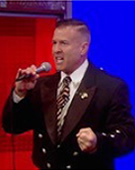 Vocalist
Vocalist
Daniel M. Clark
“The Singing Trooper” and Veteran of the US Marine Corps
He has performed with the Boston Pops during the 4th of July, was featured in People Magazine, a guest artist on Fox and Friends, The Donny and Marie show, and the Rosie O'Donnell Show. He performed for President George W. and Barbara Bush. In 2013, Clark sang God Bless America at the first game of the World Series for the Boston Red Sox. He has also delivered a spectacular National Anthem for the New England Patriots, Bruins, Celtics, and has opened the last 28 Boston Marathons! He was seen performing for the opening of the Tall Ships for Sail Boston 2017. Most recently his televised recording of the National Anthem is at the National September 11th Museum in New York city. Sgt Clark continues to perform in concert around the nation.

Accompaniment
Ray Cavicchio and his amazing invention, the Cavichord
Ray's musical career started in Hollywood at age 16 as a marimba artist on the Lawrence Welk Show. Although the producers wanted Ray and his brother, Rob, to stay on with the Welk show, the offer was politely declined due to their college aspirations. Ray has a Ph.D. from Tufts in Psychology-Medical Engineering, and is a patent holder. He is a photographer, computer-graphic artist, and an instrument-rated private pilot.
Ray had classical piano lessons from age 8 to 12, followed by some marimba lessons from his dad, Salvy, a virtuoso featured on several popular radio and TV shows in the 1940s and 1950s. Salvy's brother, Dan, gave Ray an accordion when Ray was in college. Ray soon rigged the accordion with an electronic bass device using circuitry copied from an organ pedal-board. Unfortunately, a few years later this unique accordion was stolen along with the special bass device. However upsetting it seemed at the time, technology had evolved, and Ray patented an innovative circuit, incorporating several improvements, thus paving the way for his ultimate keyboard instrument, the Cavichord.
Cavichord
A standard accordion has bass and chord buttons on the left side, and a piano-style keyboard on the right. The Cavichord makes good use of this intrinsic triple-section design while adding a fourth section of melody derived from the highest note played with the right hand. Each of these four sections can play a unique combination of sounds simultaneously depending on how the Cavichord is squeezed. With practice it can sound and feel as though there were a symphony orchestra under one's fingertips with each section responding independently yet harmoniously. Therefore, all of the music is fundamentally live at all times.
You will hear the exhilarating sound of a harp glissando. No other keyboard in the world has this feature. These arpeggios were recorded live as Ray played them. He invented special circuitry that allows reproduction of these arpeggios at will using the chord buttons of the Cavichord.

Rivanna Natural Designs, Inc.
Green Awards for your next green event
At Rivanna Natural Designs, we believe products that express gratitude, reward performance, and celebrate excellence should harm neither the planet nor the people who create, purchase, or receive them. We are honored to create these awards for the EPA's New England Region. The glass for the awards comes from a 100-year-old family-owned artisan glass company in West Virginia that transforms crushed bottle glass. The ebony glass awards are smooth, rich, and sandblast flawlessly. It's difficult to believe they are made from glass dust that would otherwise be considered hazardous waste.
The central principal of our business is that, in its every aspect, our work must reflect our strong obligation to our clients, coworkers, community, and environment. A certified woman-owned business and B Corporation, we participate in a number of voluntary programs aimed at minimizing our environmental footprint, including EPA's Green Power Partnership and EnergySTAR™ for Small Business.
